In science fiction, the universe abounds with humanoid aliens and AIs. However, most scientists believe that if we ever discover or create such beings, they will probably not resemble humans at all. The odds are slim that any alien would evolve the same way as humans along their path to intelligence. The same is true of “strong” AI, which would likely evolve consciousness through a simulated version of natural selection.
If ETs and AIs are unlikely to resemble us, might they have more in common with the Earth’s other intelligent species? Perhaps! Here we consider what non-human animals (and other earthly creatures) might have to teach us about extraterrestrial life and sentient machines.
Cetaceans

Dolphins, whales, and porpoises (collectively known as cetaceans) are widely recognized as some of the smartest non-human animals. Many species rival or exceed great apes in their cognitive abilities, and form complex societies with elaborate forms of communication and multiple distinct cultures.
!["Dolphins, and by extension cetasapiens [a fictional species of civilized cetaceans], don't see the way we do. In fact, 'see' is misleading. Human perception is very limited by comparison with what CTs can sense with echolocation, sonar, taste, hearing, and who knows what other biological senses. ... they 'see,' in 3D as it were, including density, form, background - a whole range of sources that create a hologram, not just a flat surface..." (Betty Ballantine, 'The Secret Oceans.' Photo credit Kim Bartlett - Animal People, Inc.)](https://animalpeopleforum.org/beyondhuman/wp-content/uploads/2015/03/Wolf-plays-with-dolphin-copy-2-e1464498803782.jpg)
However, cetaceans are also very different from humans in many ways. Their marine environment poses many special challenges. Despite needing air to breathe, cetaceans spend most of their lives underwater. Some, such as sperm whales, must dive thousands of feet into the black ocean depths to find food.

To meet these challenges, cetaceans have evolved many special abilities. Using echolocation, they can “see” the world through reflected sound, even in total darkness at the ocean’s floor. Because sound travels faster and farther in water than in air, they can communicate over vast distances. Large whales can sing to one another from opposite sides of the ocean! Cetaceans also sleep with just half their brain at a time. Perfectly adapted to their ocean home, they enjoy freedoms not naturally available to humans, including unrestricted travel in three dimensions and across many thousands of miles.
If we should encounter extraterrestrials that live in an aquatic environment, “swim” through thick atmospheres, or rely on echolocation over eyesight, we might imagine them to be something like cetaceans in their thinking. Cetacean communication is of special interest to SETI researchers. Some study dolphin calls to learn to recognize, and possibly decipher, information encoded in extraterrestrial radio signals.
Cetaceans are highly intelligent, and have evolved many special abilities to master an environment very different from our own. Their communication is of interest to SETI researchers hoping to detect and decipher alien radio signals.
Birds

Though being called a “birdbrain” may seem insulting, many birds are in fact highly intelligent. Crows can use and even manufacture tools. Parrots can learn hundreds of words, plus the basic rules of grammar and syntax. Many birds learn how to sing and build nests from others, and the bowerbird even displays signs of culture and artistic creativity.

Such abilities once baffled scientists, as birds lack a cerebral cortex, the part of the brain used for complex thought by humans and other mammals. We now know that birds use another part of their brain, the hyperstriatum, to perform similar mental tasks. This shows that high intelligence can evolve separately in distantly related organisms, and need not require a human-like brain.

Flying birds inhabit a very different environment and experience the world very differently from ourselves. Like cetaceans, they can travel in three dimensions across thousands of miles. Many species have better sight and hearing than humans. Some have senses we lack entirely, such as migratory birds that navigate using the Earth’s magnetic field.
Bird intelligence suggests that intelligent aliens or AIs could arise even in very different environments, with very different anatomy from our own. However, they also suggest a potential difficulty in interacting with such beings. Although birds communicate with one another through sound and body language, they lack the muscles necessary for facial expression. This makes them harder for humans to understand or empathize with, compared to mammals with expressive faces like our own. Even if ETs and AIs are as smart as we are, recognizing their intelligence or relating to them may not come easily for us.
Birds evolved high intelligence separately from mammals, using different parts of their brain for the same tasks. They also possess special abilities not shared by humans. Despite their intelligence, their physical differences from humans can make them difficult to relate to.
The Octopus
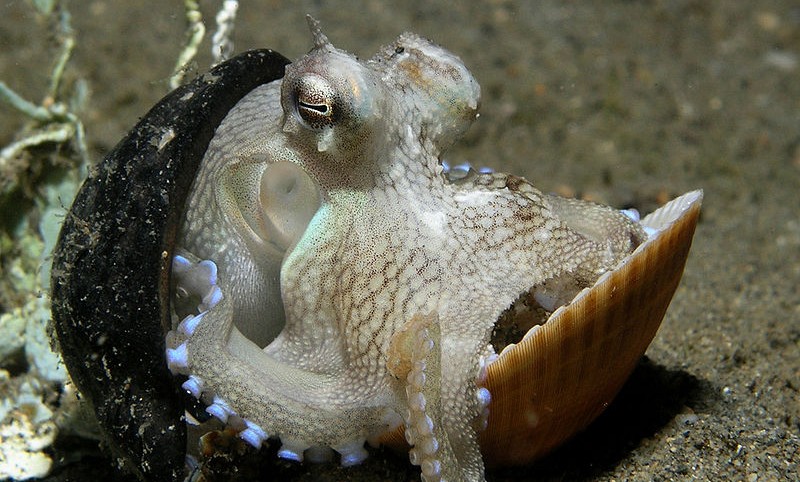
As “alien” as cetaceans and birds may appear to us, both seem practically human compared with the octopus. A bottom-dwelling marine mollusk, the octopus is more closely related to slugs and clams than to any vertebrate. And while humans, cetaceans, and birds are all highly social, octopuses are short-lived and solitary. They interact only to mate, and die shortly afterward at only a few years old. One might expect octopuses to be quite stupid – and yet, they are actually extraordinarily intelligent.
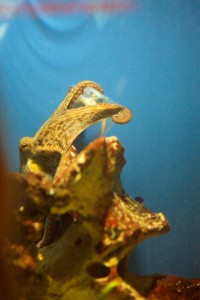
Octopuses have been documented solving complex mazes, remembering past events, using tools, and learning to unlock their enclosures in captivity. Though octopuses have large brains (at least by invertebrate standards), they are structured totally differently from vertebrates’. What’s more, most of their neurons are actually located in their arms, which are semi-autonomous and may even learn behaviors separately from the brain.
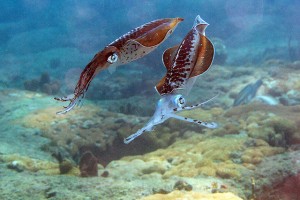
Extremely smart, but totally unlike humans in anatomy, behavior, or evolution, the octopus is perhaps the closest thing to an intelligent ET we have here on Earth. That its intelligence is spread across its brain and arms also makes it similar to existing AIs. Many modern robots and computer networks deal with complex information by dividing it amongst many smaller processors. Might strong AIs therefore resemble octopuses more than humans?
Despite their enormous differences from humans, in some ways octopuses can be surprisingly relatable. Octopuses literally turn red with anger and white with fear, are known to grab or squirt water at their keepers when hungry, and by some accounts even make eye contact with humans. If such meaningful interactions are possible between two species whose last common ancestor was a brainless worm 600 million years ago, perhaps we should be optimistic for if and when humans make contact with ETs or AIs. On the other hand, delicacies like sannakji (Korean live octopus) may suggest otherwise!
Octopuses are totally different from humans in their brain structure, environment, behavior, and evolutionary origins. Yet they are among the smartest animals, and offer important insights for both astrobiology and AI research.
Insects

Cetaceans, birds, and octopuses may approach humans in raw intelligence. However, the closest equivalents to human civilization are found among much simpler animals: insects. Many insects, including bees, ants, and termites, build complex societies of thousands of individuals, divided into distinct castes. Individuals work to serve the colony, coordinating efforts through various forms of communication: chemicals, touch, and (in honeybees) even elaborate “dances.” Some ants even farm fungi and other insects, capture slaves, sew their nests together with silk, and use tools.
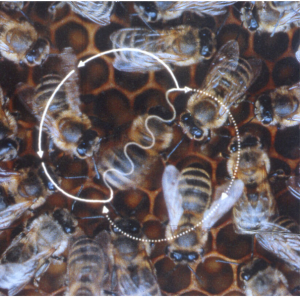
In general, scientists attribute the complexity of insect societies not to individual smarts, but a collective “swarm intelligence.” Like neurons in a brain, individual bugs have little intelligence of their own. Yet through their interactions, they can self-organize to solve problems and perform complex tasks.
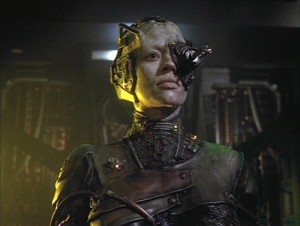
Insect swarm intelligence is of great interest to AI researchers, and many programs and robots are built to emulate such behavior. One can imagine more advanced AIs or extraterrestrial beings taking swarm intelligence to the next level, producing civilizations utterly unlike our own, with advanced technology but no individuality.
However, lest we forget, honeybees can solve mazes using abstract thought, suggesting some insects at least are individually intelligent. It isn’t yet clear how such individual smarts fit in with that of the collective. However, they raise another important point for astrobiology and AI research: intelligence can be found in surprising places, even the simple brain of a tiny invertebrate.
In general, individual insects have very little brain power. However, colonies of insects can perform complex tasks through “swarm intelligence.” Honeybees can also use abstract thought as individuals, showing that brain size doesn’t always limit intelligence.
Plants
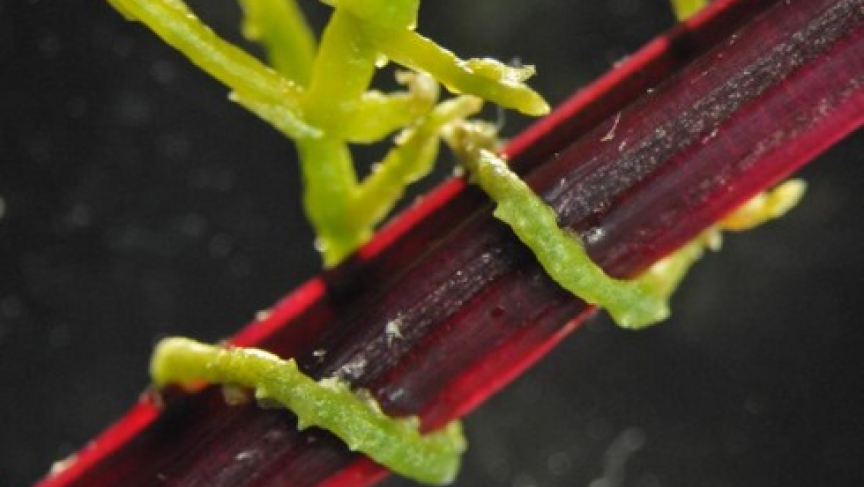
Animals may not be the only earthly analogues for intelligent aliens or machines to come. The dodder plant, or Cuscuta, is a parasite, draining other plants of nutrients for its own survival. It first wraps around potential hosts to evaluate their nutritional value. If the prospects seem poor, it moves on. If it senses a good meal, it grows a number of coils proportionate to the expected yield. It is essential that it judge correctly, since excessive growth wastes energy and can lead to starvation. Dodder plants grow the ideal number of coils with high success, suggesting they can make decisions based on future predictions.

Dodder isn’t the only plant to behave with apparent intelligence. Ground ivy also “decides” where to put down roots based on soil quality. Tobacco plants respond to touch with elevated calcium, much like human neurons. Many species “communicate” with one another via chemical signals.
If plants do indeed possess intelligence, its basis is unknown, since they lack a nervous system or any clear analogue. Potentially, the same could be true of aliens, whose mental capacities might not be obvious from their anatomy.
Plants also suggest that intelligent aliens or machines might not operate on the same time scale as us. Although plants grow, move, and may even “think,” they do so at such a slow rate as to appear inanimate to us. On the other hand, many insects can sense and respond to events much faster than we do, as anyone who’s ever tried to swat a fly knows. Computers typically process information thousands or millions of times faster than humans. If aliens or AIs experience time very differently from us, it could be an enormous obstacle in attempting to communicate or otherwise relate to them.
Plants lack nervous systems and grow and move much more slowly than animals. Despite this, some plants show signs of intelligent behavior. Similarly, intelligent ETs and AIs may not have recognizable brains or operate on human time scales.
Biological Radio
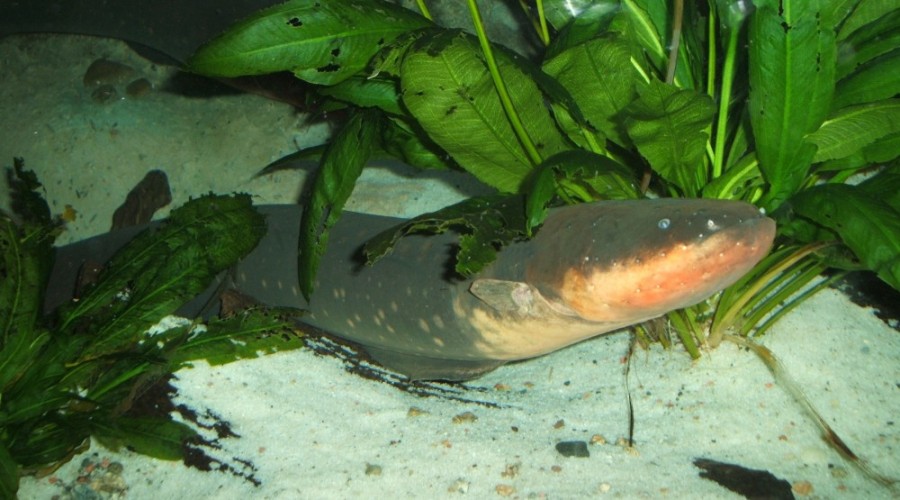
SETI, the Search for Extraterrestrial Intelligence, aims to detect extraterrestrial civilizations by way of radio communications they might broadcast. However, alien life-forms might not have to be civilized in order to produce detectable radio signals. Paleontologist and SETI author Dr. David M. Raup suggests another intriguing possibility.

Many animals possess physical abilities equivalent to advanced human technology. Cetaceans and bats use “sonar” in the form of echolocation. Migratory birds navigate by following the Earth’s magnetic fields. Electric eels naturally generate powerful electric currents. Social insects can modify their environments and construct complex physical structures. Might organisms on other planets evolve to use radio waves in much the same way, unintentionally producing signals detectable by SETI?
Raup argues for just such a possibility. He suggests that such non-technological radio signals might actually be more common than those emitted by civilizations, since species can endure for millions of years while human societies rise and fall much more rapidly. If so, it would represent yet another way in which extraterrestrial beings might resemble other animals more than us!
Just as many animals on Earth possess abilities equivalent to advanced human technology, alien life-forms might naturally produce radio signals detectable by SETI.
NEXT:
